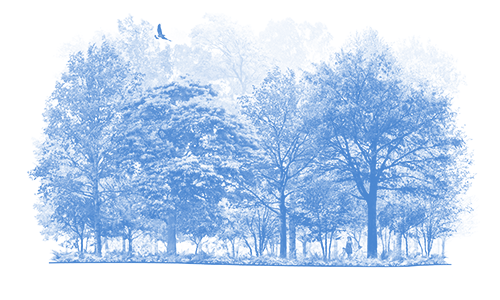








A flash of green and red, the Ruby-throated Hummingbird is eastern North America’s sole breeding hummingbird. These brilliant, tiny, precision-flying creatures glitter like jewels in the full sun, then vanish with a zip toward the next nectar source. Feeders and flower gardens are great ways to attract these birds, and some people turn their yards into buzzing clouds of hummingbirds each summer. Enjoy them while they’re around; by early fall they’re bound for Central America, with many crossing the Gulf of Mexico in a single flight.
Ruby-throated Hummingbirds feed on the nectar of red or orange tubular flowers such as trumpet creeper, cardinal flower, honeysuckle, jewelweed, bee-balm, red buckeye and red morning glory, as well as at hummingbird feeders and, sometimes, tree sap. Hummingbirds also catch insects in midair or pull them out of spider webs. Main insect prey includes mosquitoes, gnats, fruit flies, and small bees; also eats spiders. Ruby-throated Hummingbirds sometimes take insects attracted to sap wells or picks small caterpillars and aphids from leaves.
Ruby-throated Hummingbirds occur in deciduous woodlands of eastern North America as well as across the Canadian prairies. Commonly associated with old fields, forest edges, meadows, orchards, stream borders, and backyards. On their tropical wintering grounds, Ruby-throated Hummingbirds live in dry forests, citrus groves, hedgerows, and scrub.
Females build their nests on a slender, often descending branch, usually of deciduous trees like oak, hornbeam, birch, poplar, or hackberry; sometimes pine. Nests are usually 10-40 feet above the ground. Nests have also been found on loops of chain, wire, and extension cords.
The nest is the size of large thimble, built directly on top of the branch rather than in a fork. It’s made of thistle or dandelion down held together with strands of spider silk and sometimes pine resin. The female stamps on the base of the nest to stiffen it, but the walls remain pliable. She shapes the rim of the nest by pressing and smoothing it between her neck and chest. The exterior of the nest is decorated (probably camouflaged) with bits of lichen and moss. The nest takes 6-10 days to finish and measures about 2 inches across and 1 inch deep.